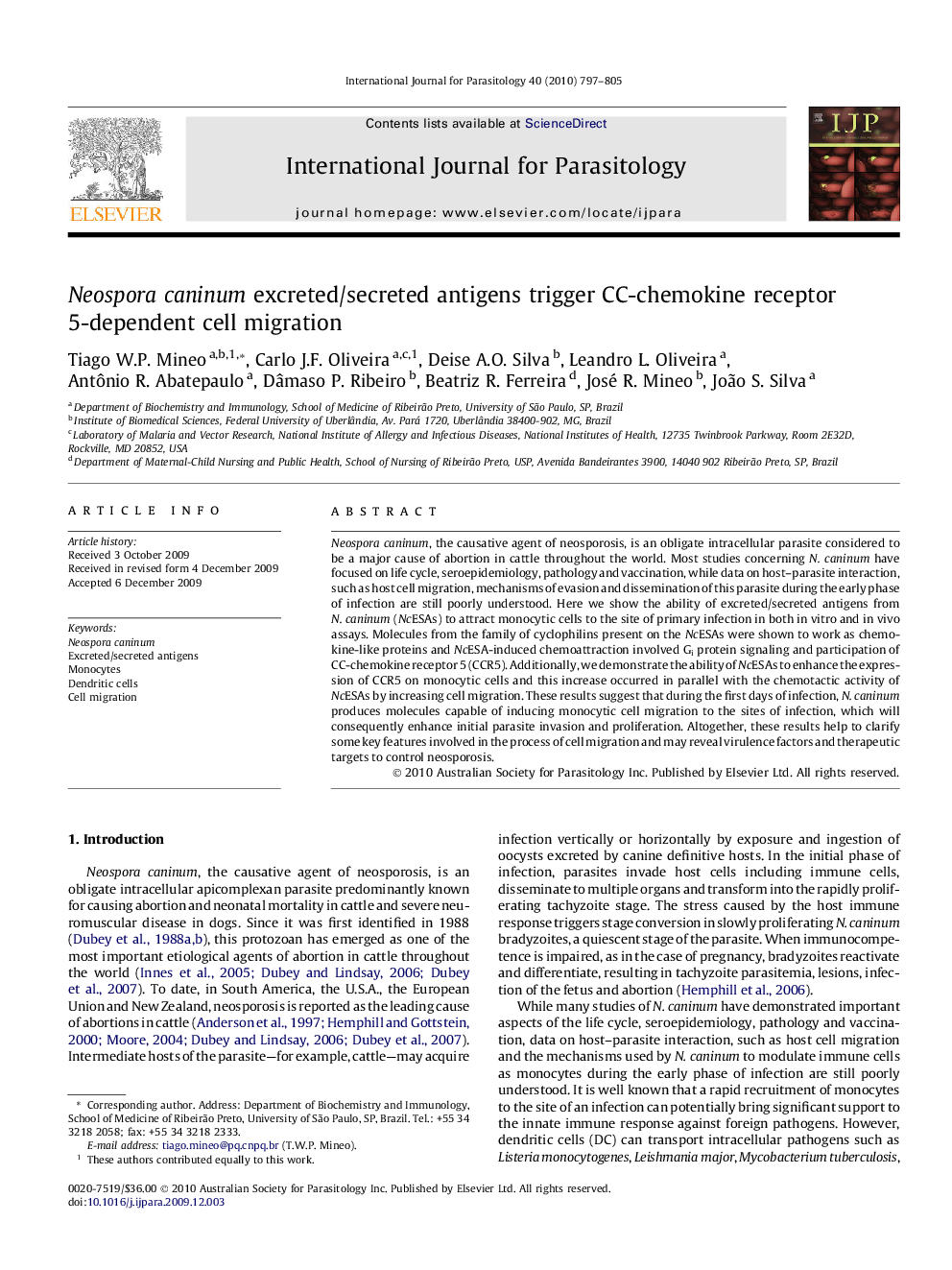| Article ID | Journal | Published Year | Pages | File Type |
|---|---|---|---|---|
| 2436471 | International Journal for Parasitology | 2010 | 9 Pages |
Neospora caninum, the causative agent of neosporosis, is an obligate intracellular parasite considered to be a major cause of abortion in cattle throughout the world. Most studies concerning N. caninum have focused on life cycle, seroepidemiology, pathology and vaccination, while data on host–parasite interaction, such as host cell migration, mechanisms of evasion and dissemination of this parasite during the early phase of infection are still poorly understood. Here we show the ability of excreted/secreted antigens from N. caninum (NcESAs) to attract monocytic cells to the site of primary infection in both in vitro and in vivo assays. Molecules from the family of cyclophilins present on the NcESAs were shown to work as chemokine-like proteins and NcESA-induced chemoattraction involved Gi protein signaling and participation of CC-chemokine receptor 5 (CCR5). Additionally, we demonstrate the ability of NcESAs to enhance the expression of CCR5 on monocytic cells and this increase occurred in parallel with the chemotactic activity of NcESAs by increasing cell migration. These results suggest that during the first days of infection, N. caninum produces molecules capable of inducing monocytic cell migration to the sites of infection, which will consequently enhance initial parasite invasion and proliferation. Altogether, these results help to clarify some key features involved in the process of cell migration and may reveal virulence factors and therapeutic targets to control neosporosis.
Graphical abstractFigure optionsDownload full-size imageDownload high-quality image (45 K)Download as PowerPoint slide
